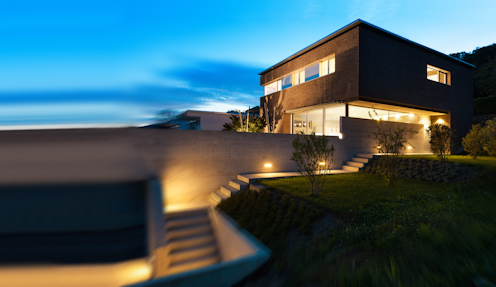How housing made rich Australians 50% richer, leaving renters and the young behind – and how to fix it
- Written by Brendan Coates, Program Director, Economic Policy, Grattan Institute

Compared to the rest of the world, income inequality is not particularly high[1] in Australia, nor is it getting much worse – until you include housing.
Rising housing costs have dramatically widened the gap between what Australians on high and low incomes can afford. Rising home prices paired with plummeting rates of homeownership are driving up wealth inequalities.
If we want to address inequality, we will have to fix housing.
Housing is draining the incomes of the poor
People on low incomes, who are increasingly renters, are spending more of their incomes on housing.
The inflation-adjusted incomes for the lowest fifth of households increased by about 26% between 2003-04 and 2019-20. But more than half of this was chewed up by skyrocketing housing costs, with post-housing incomes climbing only 12%.
In contrast, the real incomes for the highest fifth of households increased by 47%, and their after-housing incomes by almost as much: 43%.
Housing in driving wealth inequality
Wealth inequality in Australia is still below the OECD average but has been climbing for two decades.
While average full-time earnings have doubled over the past half-century, home prices have quadrupled.
It’s made more and more Australians millionaires. In 2019-20, fully one-quarter of homeowning households reported net wealth exceeding A$1 million[3].
Read more: Renters spend 10 times as much on housing as petrol. Where's their relief?[4]
Rising asset prices over the following two years, albeit now starting to reverse, mean this figure is almost certainly higher now.
Median net wealth for non-homeowning households is a lowly $60,000.
Since 2003-04, the wealth of high-income households has grown by more than 50%, much of that due to increasing property values. By contrast, the wealth of low-income households – mostly non-homeowners – has grown by less than 10%.
Housing is driving up capital income
Rents used to make up just 2% of national income in Australia. Now they’re almost 10%. This explains more than a quarter of the rise in the capital share of income in Australia since 1960.
As housing has become more expensive, it’s the wealthier Australians who own more housing who have benefited the most.
Economists Josh Ryan-Collins and Cameron Murray estimate[5] that up until June 2019, in more than half of the previous 30 quarters the median Sydney home earnt more than the median full-time worker.
In other words, a relatively low-risk, low-effort investment provided greater returns than a year of hard work.
Housing is creating a Jane Austen world
The growing divide between the housing “haves” and “have nots” is being entrenched as wealth is passed onto the next generation.
And the swelling of national household wealth to a total of $14.9 billion – increasingly in the hands of the baby boomers and older generations – means there is an awfully big pot of wealth to be passed on.







